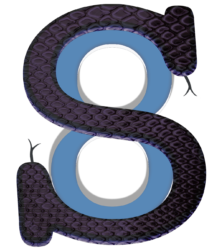A common way of meditating on the Tarot is by looking at only the 22 Major Arcana. Of course these in Qabalah are associated with the 22 Paths that connect the 10 Sephirot on the Tree of Life which expands this meditation. However to start this discussion, I wish to point out that there is a layout where the Fool is often set aside from the other 21 cards. It is said that the Fool contains all the potential and possibilities of the other cards, and/or that each card reflects a different aspect or stage of the Fool’s journey. The number usually associated with the Fool is 0.
Aleister Crowley in Liber ת vel Kabbalae Trium Literarum showed how the cards of the Book relate to the different stages and levels of spiritual development. The Liber is Class A, so is not to be changed or interpreted, but doing neither and simply taking the figure at the head of the document, there’s an interesting thing to note: that the Tau (normally the World card in Tarot, but in Crowley’s Thoth Tarot it is the Universe) is serving the task of the Fool, while the Fool (as Aleph) is under its umbrella. Aleph represents the number one, and is the first card in the top row of seven, laid from right to left as in Hebrew, so the layout shows the 21 Major Arcana from 0-6, 7-13 & 14-20 in three rows.
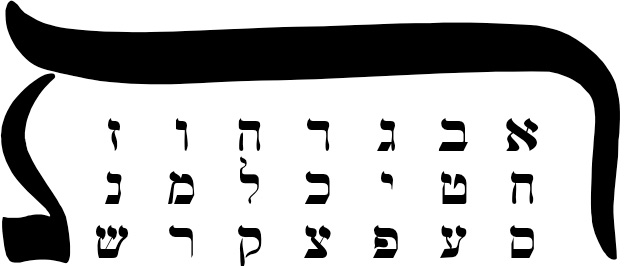
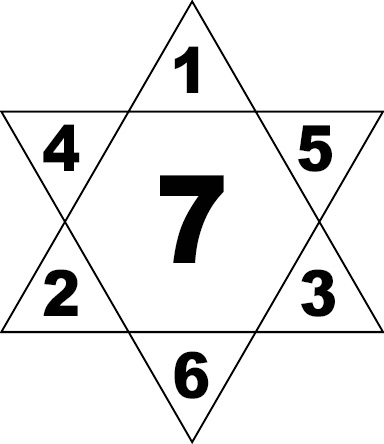
I have recently acquired Oswald Wirth’s Tarot and have been reading Wirth’s writings on the Tarot, and I have come across an interesting layout for meditation where the Fool is separated from the other 21 cards, which are then placed in three hexagrams, and you lay the cards out according to the pattern of a hexagram. With the hexagram on the left, we can see that the top and bottom are 1+6, the bottom left and top right are 2+5, and the top left and bottom right are 4+3, all adding up to 7, which is placed in the middle, and similarly the cards themselves interact and communicate with each other and with us when they are placed in these layouts. Only three cards are ‘fixed’ in the 7th position of the three hexagrams, so for those who are intuitive there is certainly something to be gleaned there from that result.
Another two layouts that seemed immediately significant to me were provided by Wirth in his Tarot of the Magicians, where the cards are simply laid out from left to right in three rows of 7 (as Crowley had done in reverse in Liber Tau). This layout of the Three Septenaries is then compared to a layout of the Seven Ternaries, where the cards are laid out from top to bottom in seven groups of three (as Crowley had broken his down to distinguish the stages of the spiritual journey).
Inspired to play, I laid out the hexagrams using Crowley’s Book of Thoth with the Fool being in the 1st position, instead of the Magus, again, being under the influence of Liber Tau. Besides, this is made rather fitting with the Book of the Law saying: “My prophet is a fool with his one, one, one; are not they the Ox, and none by the Book?” (Aleph being derived from a Semitic word meaning “ox” and the origins of the letter are said to be an Egyptian hieroglyph depicting an ox’s head. The none by the Book may be the 0 attribution the Fool card in the Book of Thoth carries).
Anyways, when laid out in three Hexagrams, the the following configuration is produced:
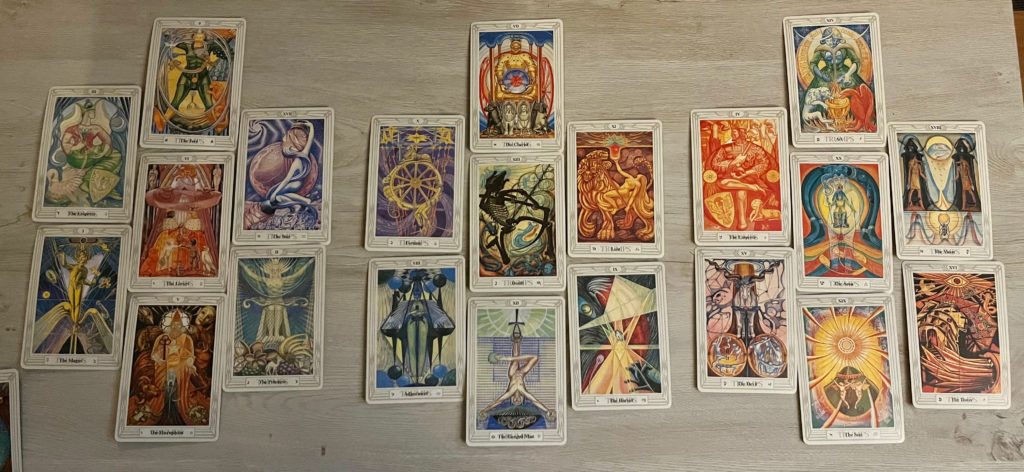
The central cards ‘fixed’ to the seven position can give them additional meaning in meditation, but I don’t wish to use the space here to do that. The Lovers/Brothers, Death, and the Aeon… surely there would be much there to say. Yet, continuing onto the Wirth layout… or rather Crowley’s as shown Liber Tau, I laid the cards from right to left.
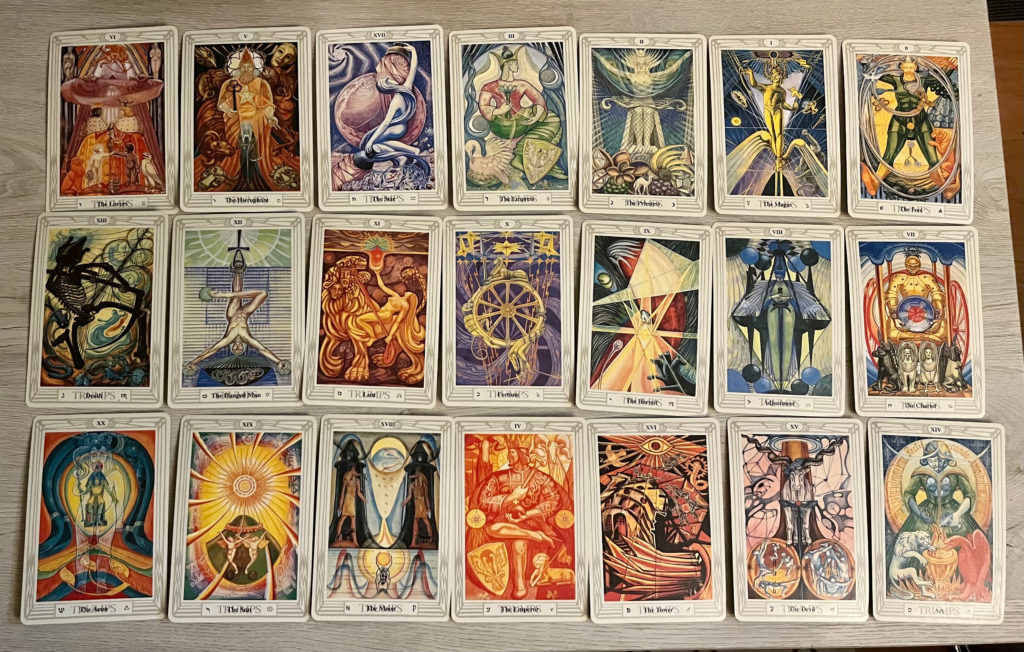
| VI | V | XVII | III | II | I | 0 |
| XIII | XII | XI | X | IX | VIII | VII |
| XX | XIX | XVIII | IV | XVI | XV | XIV |
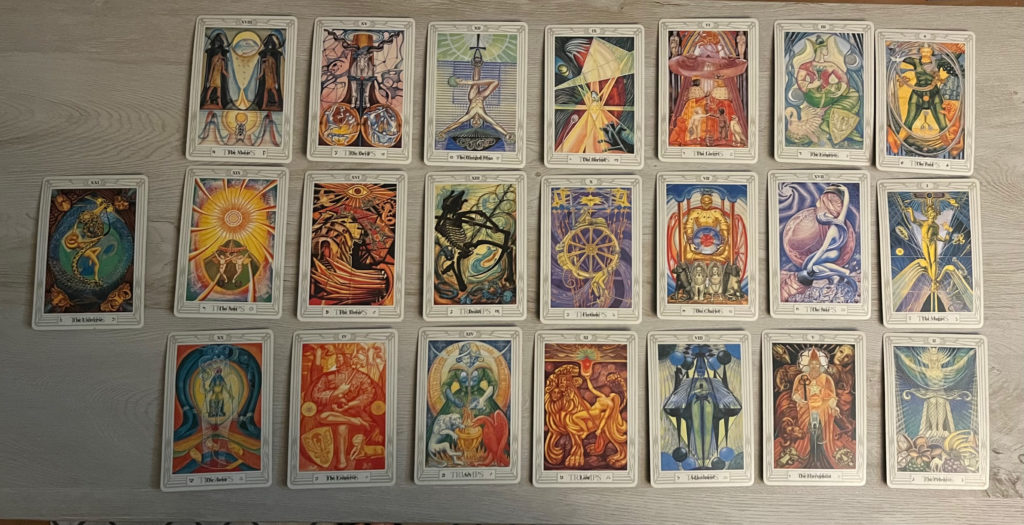
But then, chose to lay them out into the Seven Ternaries as Wirth had done, and further, pulled the cards which appear in both layouts (emphasized in bold).
| XVIII | XV | XII | IX | VI | III | 0 |
| XIX | XVI | XIII | X | VII | XVII | I |
| XX | IV | XIV | XI | VIII | V | II |
The discrepency of the numbers in the tables are since Crowley’s layout in Liber Tau simply laid out the Hebrew letters associated with the cards, this has a swapped “Tzaddi” (the Star) with the Emperor, since the Book of the Law reads: “All these old letters of my Book are aright; but [Tzaddi] is not the Star.” What I found promising is that the resulting 9 cards taken as they appear in both tables retain this Empress/Emperor pairing in the middle column because of the swap that has taken place.
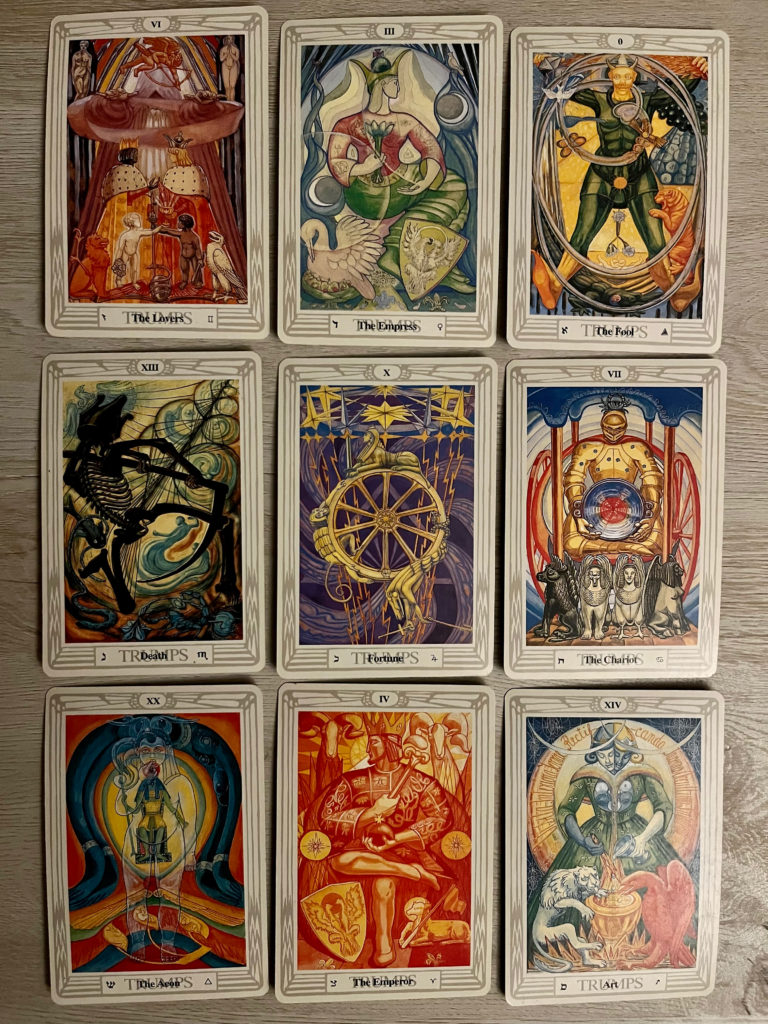
I hope to peel back more layers of this and see what intuition or insight can be gained from configuring the Book of Thoth in this way. However, I wanted to share this in case anyone else is inspired to play around and dust off their cards of Art.

